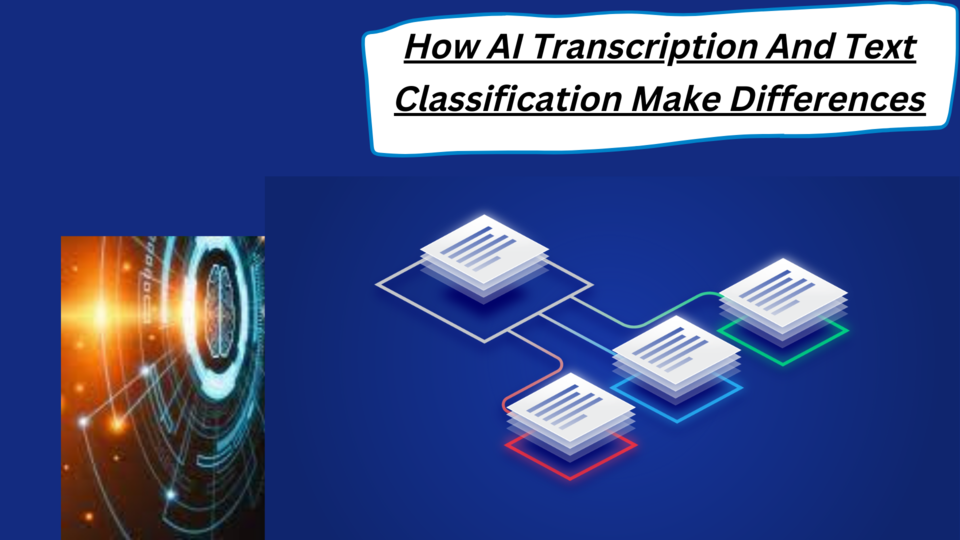
Data is the powerhouse that is changing the digital landscape of our time. From email to Facebook posts there's data everywhere. Businesses haven't had access to this amount of data However, is being able to access data suffice? The wealth of information is useless or outdated when it's not processed.
Unstructured text is an abundant source of information however, it is not useful to companies without ensuring that the data is properly organized, classified and examined. Unstructured data includes audio, text, videos and social media constitutes between 80 and 90% of the total data. Furthermore, just 18 percent of companies are taking advantage of their organizations' unstructured data.
This short journey down memory lane is crucial to comprehend the way that voice recognition has developed in the past. It has advanced significantly. And it's not in a position to perform what was previously believed to be difficult: translating spoken words into text. AI transcription software that is trained using AI Training Datasets can record and convert conversations with the help of Artificial Intelligence (AI). It can also recognize the mood, intention accents, various speech patterns, action items and many more. This makes content accessible and accessible to across the globe. In this article we will discuss the concept of AI transcription. We will also discuss how automate transcription work and its advantages, as well as precision, and more.
The vast majority of current AI systems depend on machine learning. this is a process that involves data collection to support AI which lets The systems learn and change using statistical models to draw conclusions based on data patterns. Deep learning, a form of machine learning that employs artificial neural networks that are influenced by the scattered communication nodes of the brain of humans, is at the heart of a lot of progress in AI in the past decade. Deep learning has helped humans to automate greater tasks than the previous technology allowed, which has led to significant productivity improvements in both the private and public sectors. Recent advances in artificial intelligence could have significant implications for security of the nation.
Artificial Intelligence in National Security as well as off the battlefield
Strategic competitors like China as well as Russia are investing massively in artificial intelligence in order to solve national security issues. Similar to this as the Department of Defence is investing millions of dollars to create and integrate AI in defence systems. The Department of Defence's AI applications range from automating administrative tasks (such like financial-quality data processing) to predicting mechanical failures within weapons platforms to conducting complex analyses to assist in the mission of warfighting. A variety of AI capabilities that aid the Department of Defense's combating mission are being developed. Examples include analyzing intelligence data (for instance facial recognition) and upgrading weapons systems (such drones and robotic ships) and making recommendations for battlefields (such for the best places to target missiles).
What exactly is AI transcription?
The process of translating video or audio content to text for various reasons is referred to as transcription. It is utilized across a variety of industries, such as medical, music, film legal, and other. It can be beneficial to any enterprise because it improves communication. Machine learning transcription utilizes speech recognition and voice technology to convert audio data into text. AI transcription like the name suggests utilizes AI technology to convert humans' speech to text. It takes away notes that are taken manually. Instead the user can "hire" software for Video Transcription for listening to chats or videos or audio files and instantly convert them into text.
What's Text Classification?
Text classification , also known as categorization, can be described as the act of dividing texts into categories or classes. Utilizing this method of machine learning every type of text document, web file research and medical reports, legal documents and many more - can be categorize, organized, and arranged.
Classification of texts is the most fundamental stage of natural language processing, which has multiple uses for spam detection. Sentiment analysis and intent detection data labels, and much more.
Possible use cases for Text Classification
There are numerous benefits of making use of machine learning to classify text including scalability, the speed of analysis, the reliability, and the capability to quickly make decision based on conversations in real-time.
1. Monitor Emergencies
Text classification is widely used by police agencies. By analyzing posts on social media and conversations , and then using text classification tools they can identify the onset of panic by filtering conversations for urgency and identifying emergencies or negative responses.
2. Find ways to promote brands
Marketers use text classification to advertise their products and brands. Businesses can better serve the needs of their customers better by keeping track of user reviews and responses to feedback, and discussions about their products or brands online as well as figuring out the influential people, promoters and critics.
3. Data handling made simpler
The task of managing data is reduced by text classification. Researchers, academia, administration and government officials, as well as law professionals benefit from text classification when unstructured data is classified into groups.
4. Categorize Service Requests
Companies manage an abundance of service requests per day. It is difficult to manually go through each one to determine their function the urgency, and timeframe for delivery is difficult. By using AI to classify text it's much easier for companies to label jobs based on the category, location, and need, and to organize resources efficiently.
5. Improve the web user experience
Text classification can help identify the product's content as well as the image, and then determine the best category, which will improve the user experience when shopping. Text classification also assists in identifying the correct content on websites like blogs, news portals, E-Commerce stores, news curators and much more.
GTS
Global Technology Solutions is the name in gathering datasets and annotations for all AI/ML project. We offer services like data collection as well as data annotation. Our services include Text Dataset audio, video and image datasets.













